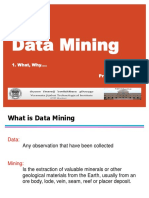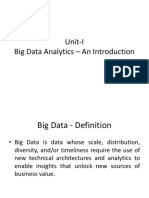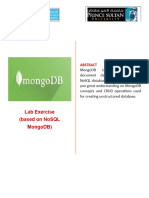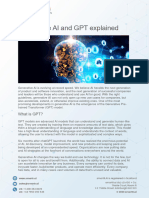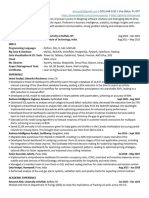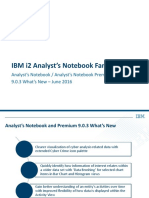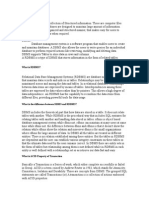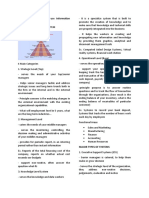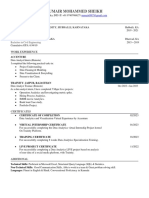An R Companion for Introduction to Data Mining
1
Michael Hahsler
1 Department of Computer Science, Southern Methodist University, USA
DOI: 10.21105/jose.00223
Software
• Review Summary
• Repository
• Archive An R Companion for Introduction to Data Mining is an open-source learning and teaching
resource that covers how to implement data mining concepts using R. It is designed
Submitted: 31 May 2023 to accompany the popular data mining textbook Introduction to Data Mining (Tan et
Published: 26 December 2024 al., 2017) to study the implementation of the basic data mining concepts including data
License preparation, classification, clustering, and association analysis. The resource uses complete,
Authors of papers retain copyright annotated examples to demonstrate how data mining concepts can be translated into R
and release the work under a code.
Creative Commons Attribution 4.0
The materials have been made publicly available at: https://github.com/mhahsler/
International License (CC BY 4.0).
Introduction_to_Data_Mining_R_Examples and licensed under the Creative Commons
Attribution 4.0 (CC BY 4.0) License.
Statement of Need
The textbook Introduction to Data Mining (Tan et al., 2017) has been one of the most
popular choices to learn and teach data mining concepts. Several chapters have been made
available for free by the authors on the books’s website. One of the authors also provides
Python Jupyter notebooks with examples, but complete R code examples were still needed.
Given the R community’s interest in data analysis, data science, and machine learning,
and the broad support of R packages for data mining, there was a noticeable gap that
was filled by this learning resource. This resource targets advanced undergraduate and
graduate students and can be used as a component for a first introduction to data mining.
Learning Objectives and Content
The resource assumes basic knowledge of programming and statistics. The learning
objectives are to:
• prepare and understand data,
• perform classification,
• perform association analysis, and
• perform cluster analysis.
The resource presents self-contained and annotated R code examples that work with small
datasets carefully chosen to show the learner many important aspects of data mining. The
learner can copy and paste the examples into a new R markdown notebook to experiment
with the code and the provided example data. Small exercises encourage the learner to
modify the code by applying it to a different dataset. This learning-by-doing approach
has worked well in preparing students to work with more complex real-world datasets by
initially relieving them from dealing with too many low-level implementation details while
exploring the concepts.
Hahsler. (2024). An R Companion for Introduction to Data Mining. Journal of Open Source Education, 7 (82), 223. https://doi.org/10.21105/jose.00223. 1
� The resource mirrors the textbook’s structure so it can be used along with it easily. After
a short introduction, Chapter 2 discusses data types in R, data quality concerns, and
data preprocessing. Data exploration and visualization examples are included. Chapters
3 and 4 cover classification methods, model selection, model evaluation, different types
of classifiers, and essential practical issues like class imbalance. Chapter 5 introduces
association analysis with a strong emphasis on visualization. Chapter 7 presents examples
of cluster analysis, including popular algorithms, cluster evaluation, and the effect of
outliers.
Instructional Design
This resource does not replace the Introduction to Data Mining textbook or instruction by
a teacher. It instead provides supporting material for learning to implement data mining
concepts in R. The learner is expected to have some programming experience and basic
statistics knowledge.
The resource can be used for self-study by any interested person together with reading the
Introduction to Data Mining textbook, but its main purpose is to be used as a component
for designing an introductory data mining course for advanced undergraduate or graduate
students. To support instructors, in addition to the documented code examples, complete
presentation slide sets are provided on the book’s GitHub page in PDF and PowerPoint
format. The slides are organized in the same way as the resource. A direct connection
between the slides and the code examples is provided by the R symbol on the slides
where example code is available. The code examples can be assigned to be studied by the
students outside of class or used by the instructor in class.
Designing assignments and assessments is left to the instructor since they depend on
the level and field of study of the students (e.g., computer science, statistic, economics,
or business). For example, for undergraduates, we suggest to ask the students to apply
the data mining techniques to a small, clean instructional data set (sample exercises are
available in the resource at the end of each chapter), while graduate students may be
asked to analyze larger real-world data sets, which may require a significant amount of
cleaning and preprocessing.
Story of the Project
Since starting to teach data mining with R in the Spring of 2013, I have been developing
the Companion for Introduction to Data Mining resource mainly based on caret (Kuhn,
2008), and a set of packages developed with students to better support different data
mining tasks (e.g., arules (Hahsler et al., 2005), seriation (Hahsler et al., 2008) arulesViz
(Hahsler, 2017), and dbscan (Hahsler et al., 2019)). The resource grew from a collection of
short, unconnected R scripts to a complete set of documented code examples that walk
the learner step-by-step through how to implement data mining methods, and how to
interpret the results. It went through an update to incorporate the popular tidyverse
package collection (Wickham et al., 2019) and a transition from the 1st edition of the
Introduction to Data Mining textbook to the second.
The companion resource has been used successfully in the department of Computer Science
at Southern Methodist University for many years and by several instructors as a key
component of an introductory data mining course delivered in person and in a distance
education setting. It is also linked on the textbook website as an official resource. Faculty
at the department actively maintains the resource, and we will update it with new R tools
like tidymodels (Kuhn & Wickham, 2020) over time.
Hahsler. (2024). An R Companion for Introduction to Data Mining. Journal of Open Source Education, 7 (82), 223. https://doi.org/10.21105/jose.00223. 2
� References
Hahsler, M. (2017). arulesViz: Interactive visualization of association rules with R. R
Journal, 9(2), 163–175. https://doi.org/10.32614/RJ-2017-047
Hahsler, M., Grün, B., & Hornik, K. (2005). arules – A computational environment for
mining association rules and frequent item sets. Journal of Statistical Software, 14(15),
1–25. https://doi.org/10.18637/jss.v014.i15
Hahsler, M., Hornik, K., & Buchta, C. (2008). Getting things in order: An introduction
to the R package seriation. Journal of Statistical Software, 25(3), 1–34. https:
//doi.org/10.18637/jss.v025.i03
Hahsler, M., Piekenbrock, M., & Doran, D. (2019). dbscan: Fast density-based clustering
with R. Journal of Statistical Software, 91(1), 1–30. https://doi.org/10.18637/jss.v091.
i01
Kuhn, M. (2008). Building predictive models in R using the caret package. Journal of
Statistical Software, 28(5), 1–26. https://doi.org/10.18637/jss.v028.i05
Kuhn, M., & Wickham, H. (2020). Tidymodels: A collection of packages for modeling and
machine learning using tidyverse principles. https://doi.org/10.32614/CRAN.package.
tidymodels
Tan, P.-N., Steinbach, M. S., Karpatne, A., & Kumar, V. (2017). Introduction to data
mining (2nd Edition). Pearson. ISBN: 978-0133128901
Wickham, H., Averick, M., Bryan, J., Chang, W., McGowan, L. D., François, R., Grole-
mund, G., Hayes, A., Henry, L., Hester, J., Kuhn, M., Pedersen, T. L., Miller, E.,
Bache, S. M., Müller, K., Ooms, J., Robinson, D., Seidel, D. P., Spinu, V., … Yutani,
H. (2019). Welcome to the tidyverse. Journal of Open Source Software, 4(43), 1686.
https://doi.org/10.21105/joss.01686
Hahsler. (2024). An R Companion for Introduction to Data Mining. Journal of Open Source Education, 7 (82), 223. https://doi.org/10.21105/jose.00223. 3









































